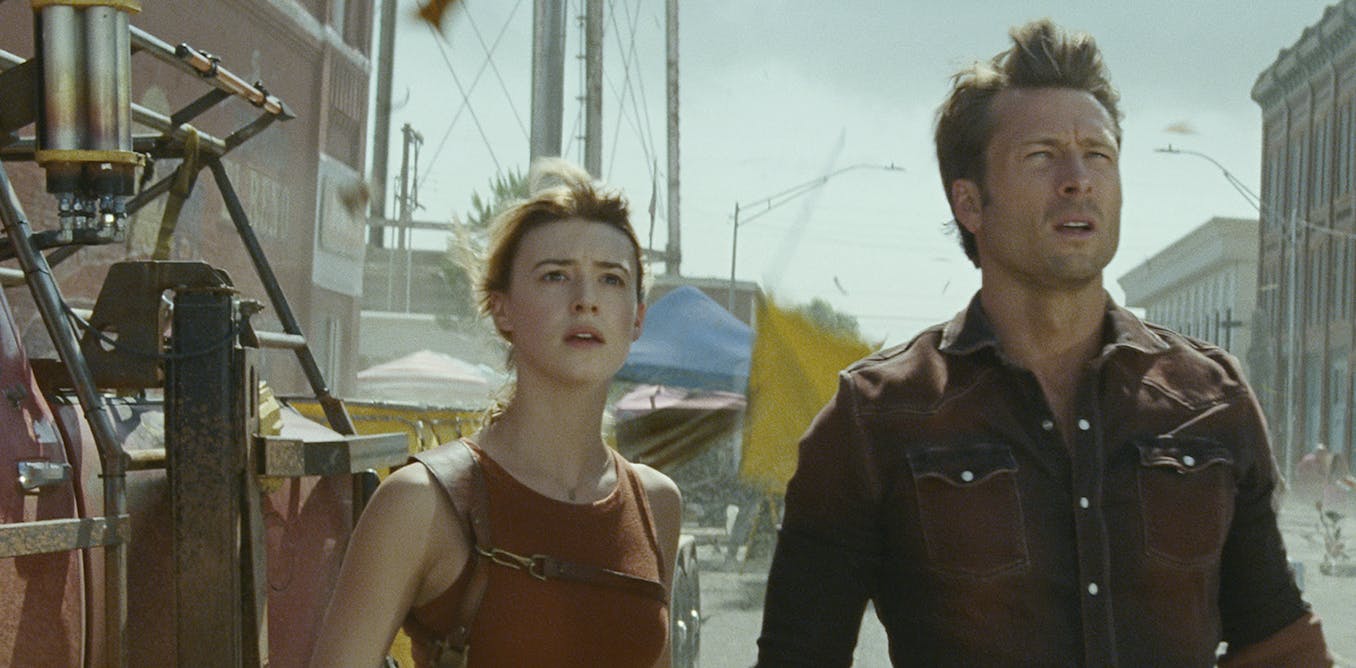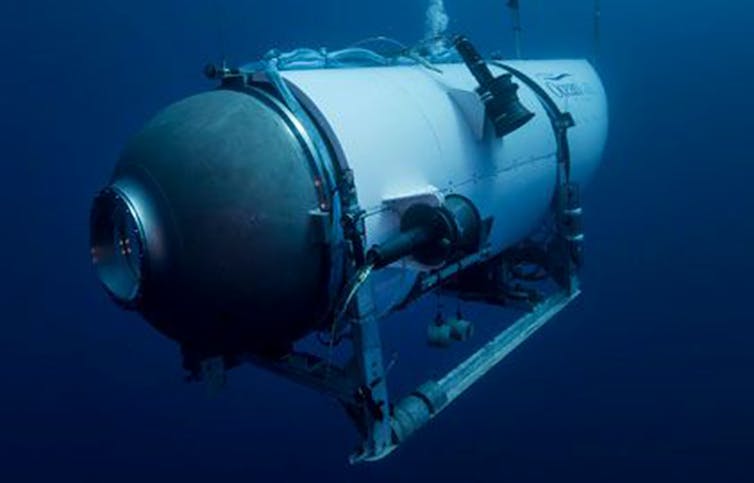In its recent opening weekend, Twisters marked the biggest start ever for a natural disaster movie with US$80.5 million in North American box office revenue. The popularity of the film indicates disaster movies remain an important popular culture phenomenon.
As an associate professor of disaster and emergency management, I recently was a panellist at a Natural Hazards Workshop on a session titled, Now Streaming: Representations of Disasters in Film and Television.
Disaster studies scholars have considered disaster movies from many perspectives including their value for teaching people about disaster management and how these films shape the meaning and experience of disasters.
Twisters falls squarely into the genre of disaster films due to its adherence to tried-and-true conventions that have made disaster movies successful over the decades. Foremost, these films show a terrifying disaster in the comfortable context of a predictable storyline.
Twisters correctly depicts frightening aspects of the raw destructive power of tornadoes, peppered with fictional liberties such as the ability to tame tornadoes.
Twisters’ predecessors
The recently released Twisters is director Lee Isaac Chung’s new take on Jan de Bont’s 1996 movie Twister.
Twenty-eight years later, this re-envisioned tornado adventure pays homage to the 1996 blockbuster in small ways. Both films depict tensions of competition and co-operation among various factions of tornado chasers.
The anxieties viewers feel in watching Twisters can be connected to the Godzilla films of the 1950s, which suggested deeper fears of crossing tipping points we don’t comprehend. The frequency and ferocity of the severe weather in Twisters alludes to a systemic collapse of normal weather patterns that is not fully understood. Yet, one criticism is that Twisters avoids mentioning the elephant in the room — climate change.
Read more:
The twist in Twisters: for a film that doesn’t mention climate change, the latest disaster flick is both nuanced and effective
However, that criticism is tempered as Twisters does represent disaster reality by not entirely sidestepping challenging issues. The downsides of storm-chasing mobs are highlighted. The problem of predatory development schemes taking advantage of disaster victims, known as disaster capitalism, is also woven into the story.
1970s disaster films
The cinematic tropes and conventions in Twisters also harken to the 1970s era of disaster movies.
Producer Irwin Allen’s blockbuster films The Poseidon Adventure (1972) and The Towering Inferno (1974) told fantastical stories where characters confront disasters — respectively, a sinking ocean liner and a skyscraper on fire — to survive against all odds.
Facts, fiction and tropes
A compelling characteristic of disaster films is that they often share some resemblance to reality. In the opening scenes of Twisters, the fictional death of storm chasers sets the tone for character development of the protagonist. In real life, in 2013 three professional tornado researchers and an amateur photographer were killed while chasing a tornado in Oklahoma.
Twisters also presents selected aspects of tornado science in a loose and inaccurate manner. The National Weather Service has posted a series of video vignettes on tornado facts versus science fiction on the big screen to counteract the invented facts in Twisters.
(Universal Pictures via AP)
A plot device that appears repeatedly in disaster movies is characters making dumb behavioural choices when it comes to safety. Twisters depicts that trope, as characters retreat to a highway underpass to ride out a storm and then later run into a movie theatre to escape a tornado. In real life, hiding under an overpass or sheltering in a movie theatre auditorium is not recommended.
Another trope in disaster movies is an unlikely romantic pairing. Twisters also delivers on that storyline as members of opposing storm chasing teams keep getting drawn to each other. This subplot plays as a romantic comedy involving characters played by Daisy Edgar-Jones and Glen Powell.
Resurgence of disaster films
Back in 1974, film critic Roger Ebert reviewed Towering Inferno. He reflected on whether during uncertain world conditions people turn to escapist entertainment. Ebert suggested when we fear for ourselves, we go to disaster movies. His words remain true today.
The 2024 year-to-date U.S. preliminary tornado count is at 1,250, ranking it as third highest for the January to June period. Fear is in the air as many communities are grappling with tornado impacts long after the attention fades. Twisters allows for a brief escape from this harsh tornado reality.
Perhaps Twisters could be seen as part of a current resurgence in disaster film in the context of anxieties surrounding global warming and environmental disaster. Extreme weather events are increasing in both intensity and frequency.
Storm chasing characters from Twisters might reprise their roles in battles against hailstorms, flash floods or lightning in the next iteration of what can become a convective storm movie franchise.




